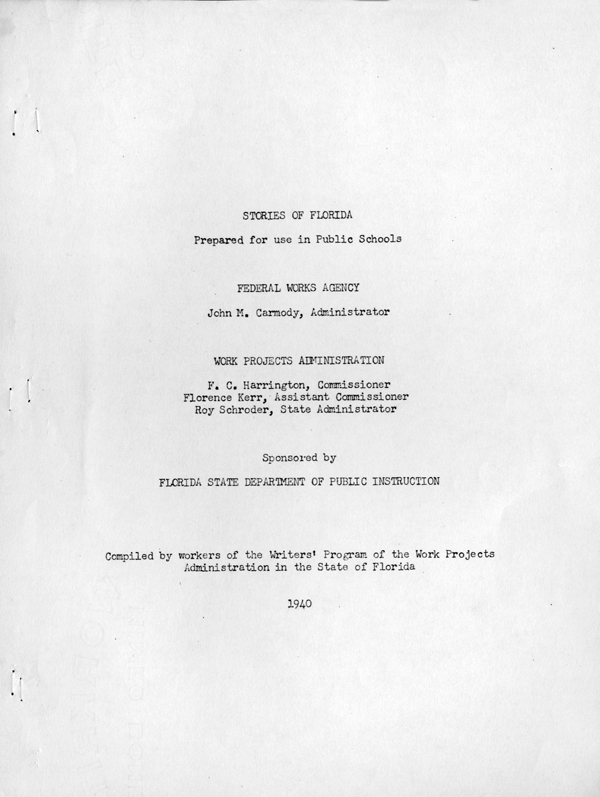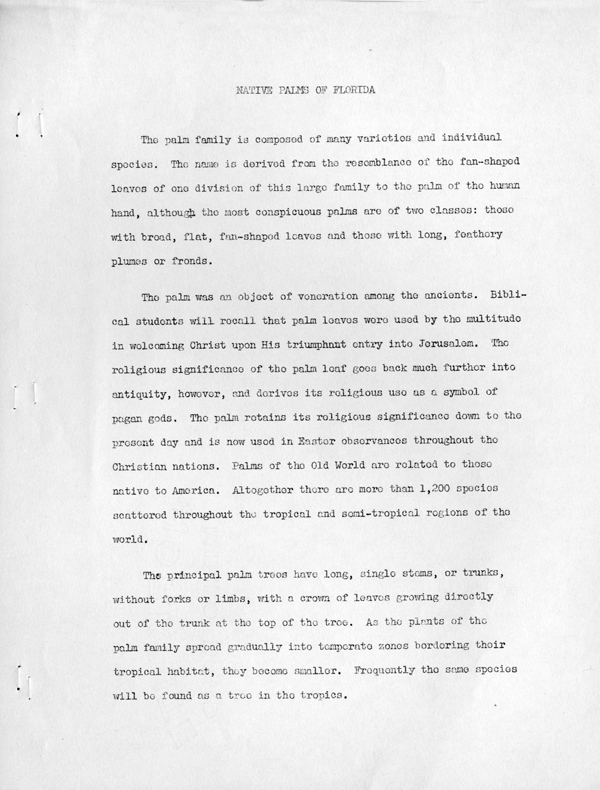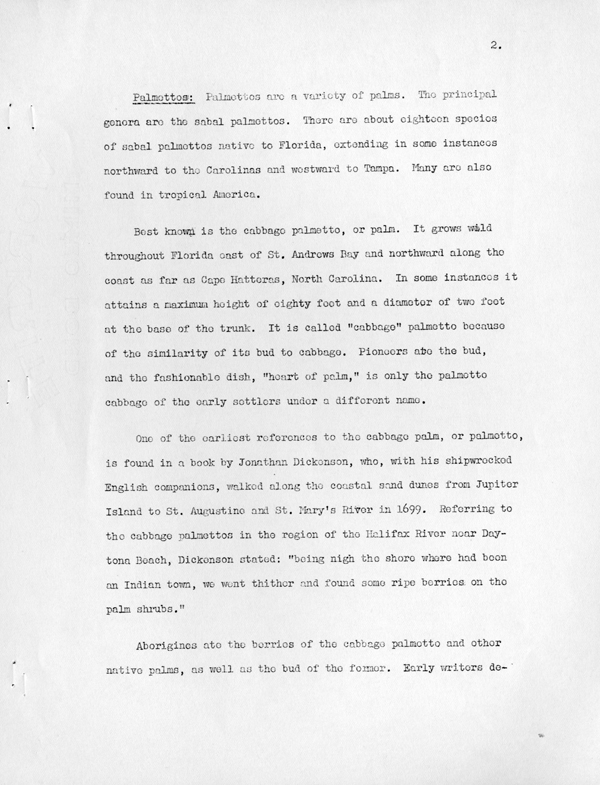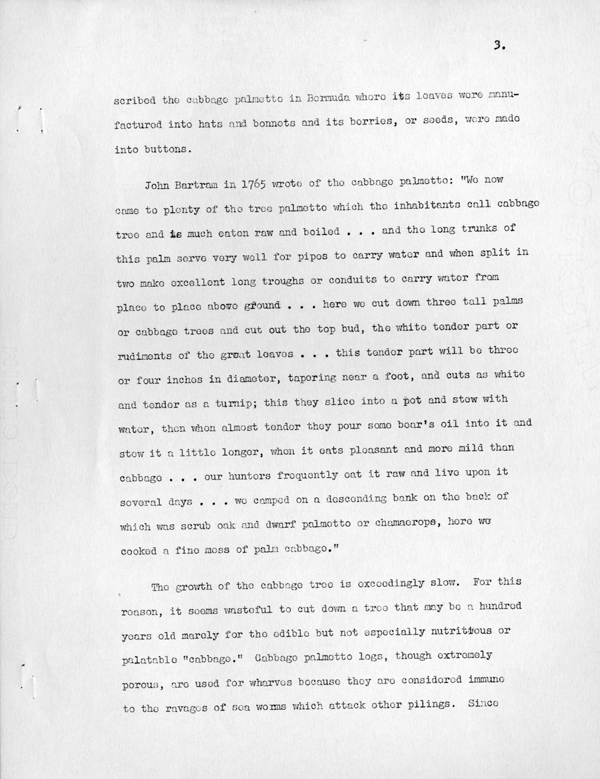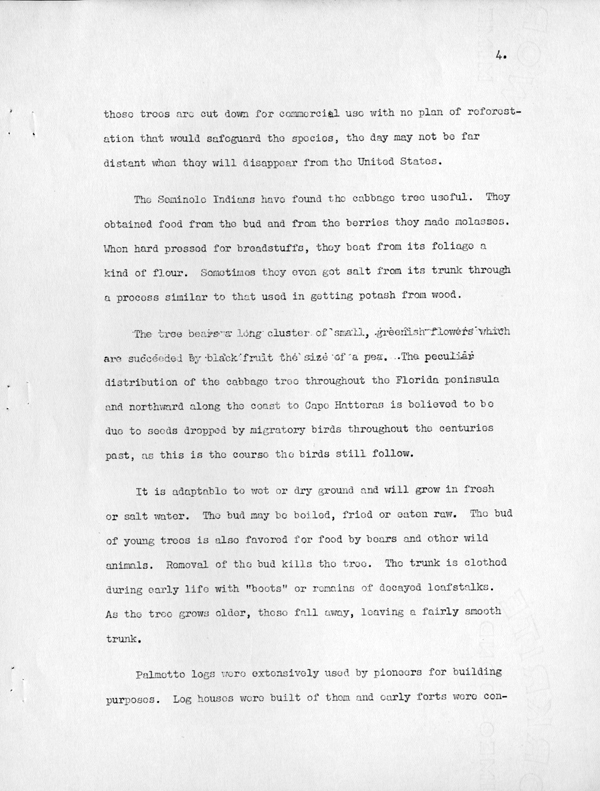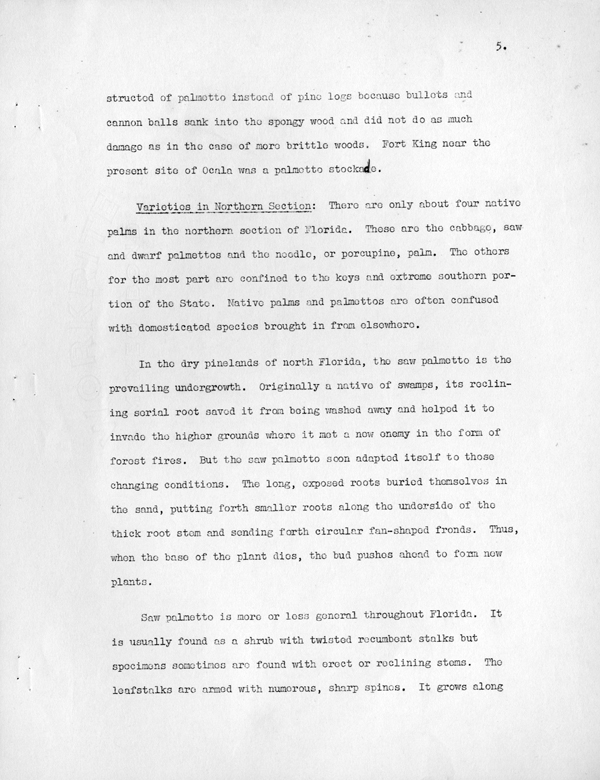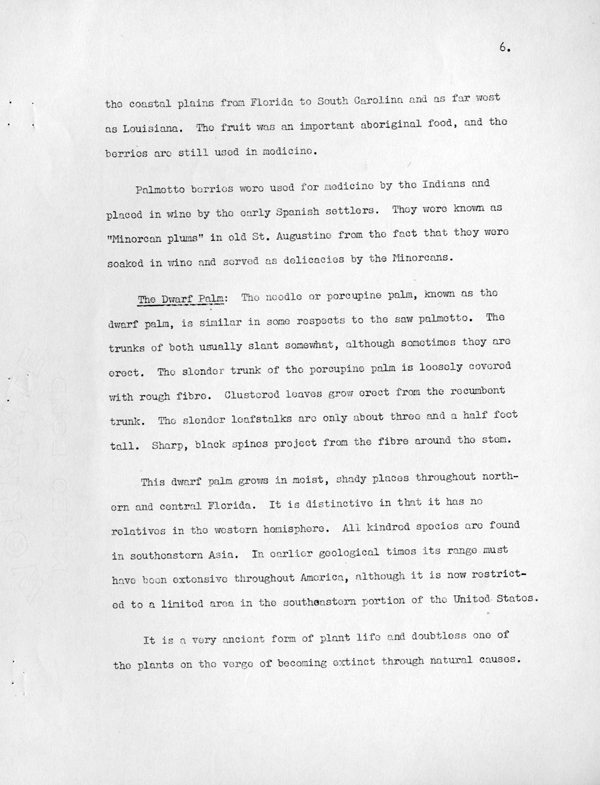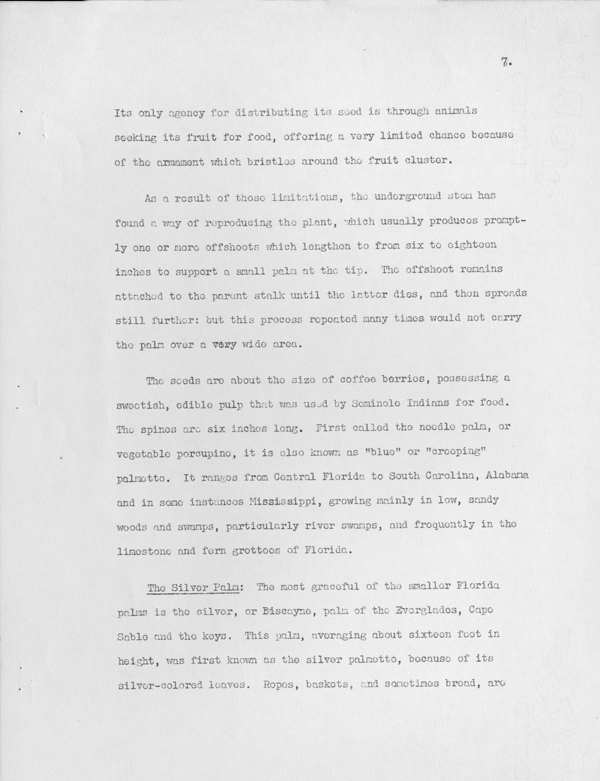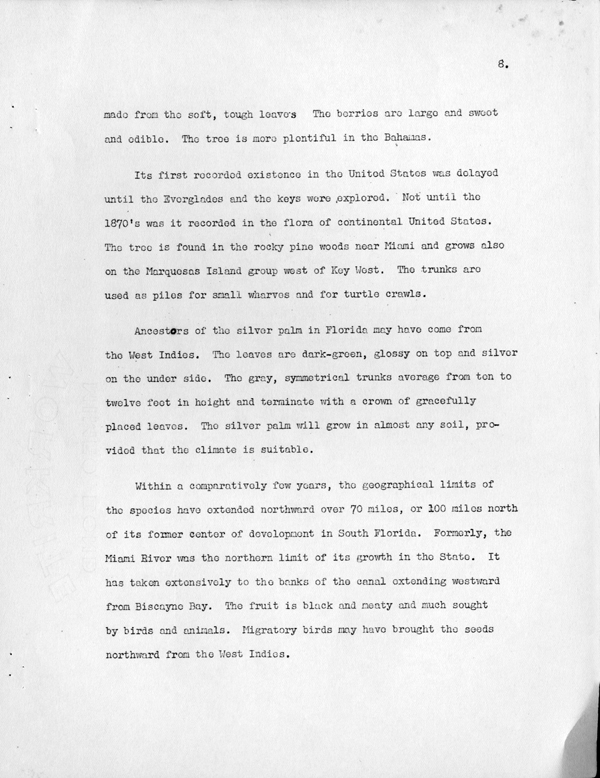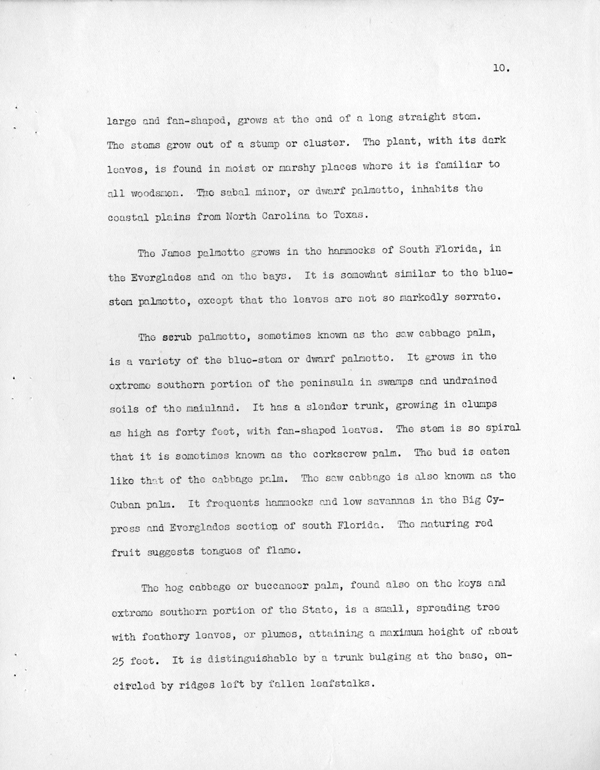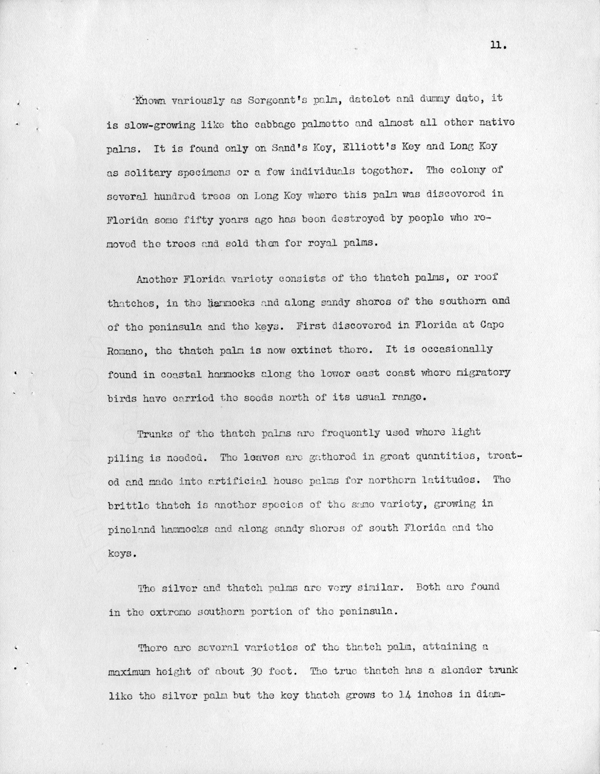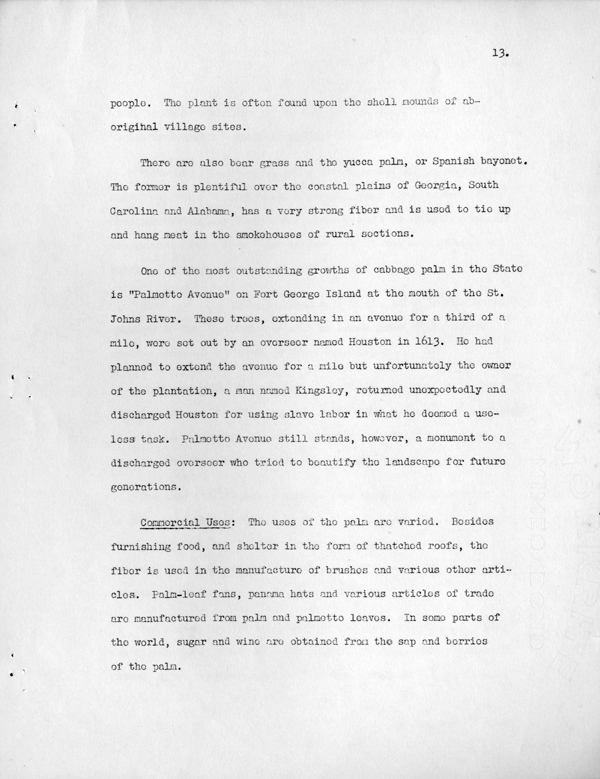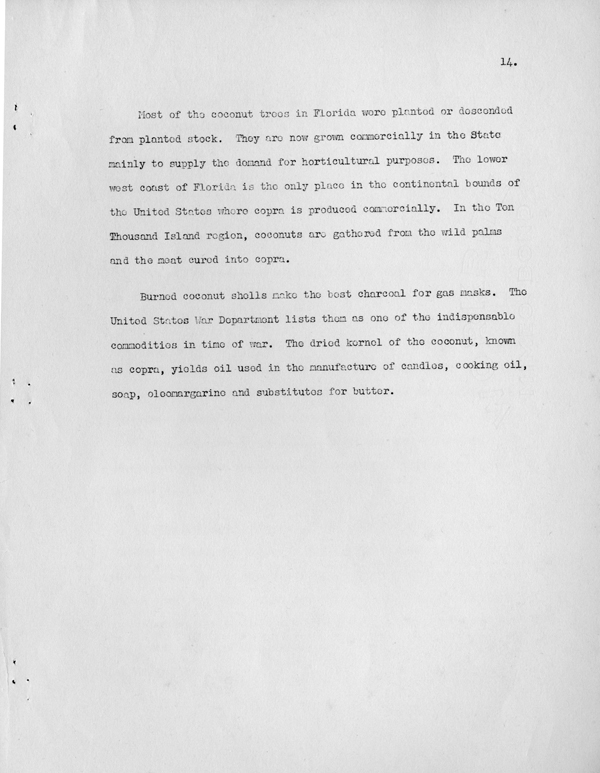Florida Memory is administered by the Florida Department of State, Division of Library and Information Services, Bureau of Archives and Records Management. The digitized records on Florida Memory come from the collections of the State Archives of Florida and the special collections of the State Library of Florida.

State Archives of Florida
- ArchivesFlorida.com
- State Archives Online Catalog
- ArchivesFlorida.com
- ArchivesFlorida.com
State Library of Florida
Related Sites
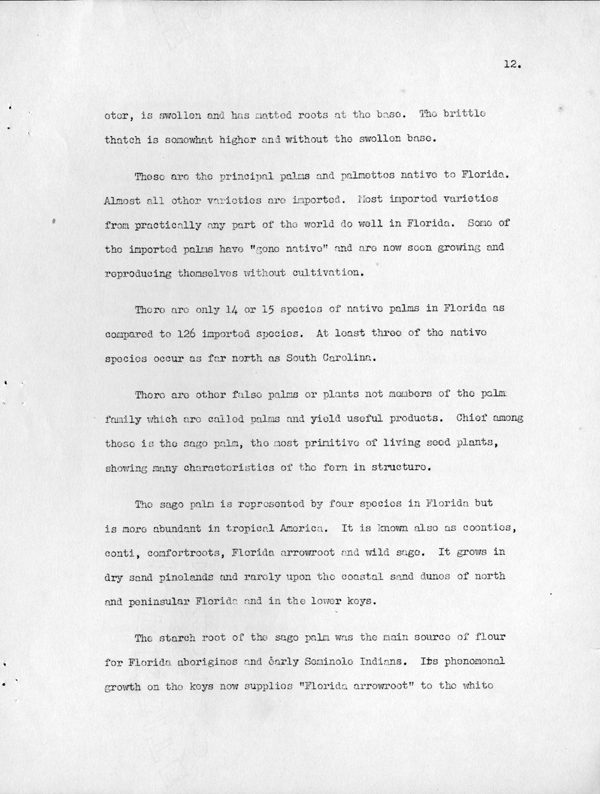
Description of previous item
Description of next item

Title
Published Date
[page 12]
eter, is swollen and has matted roots at the base. The brittle thatch is somewhat
higher and without the swollen base.
These are the principal palms and palmettos native to Florida. Almost
all other varieties are imported. Most imported varieties from practically any
part of the world do well in Florida. Some of the imported palms have "gone
native" and are now seen growing and reproducing themselves without
cultivation.
There are only 14 or 15 species of native palms in Florida as compared
to 126 imported species. At least three of the native species occur as far north
as South Carolina.
There are other false palms or plants not members of the palm family
which are called palms and yield useful products. Chief among these is the
sage palm, the most primitive of living seed plants, showing many
characteristics of the fern in structure.
The sage palm is represented by four species in Florida but is more
abundant in tropical America. It is known also as coontics, conti, comfortroots,
Florida arrowroot and wild sage. It grows in dry sand pinelands and rarely
upon the coastal sand dunes of north and peninsular Florida and in the lower
keys.
The starch root of the sage palm was the main source of flour for
Florida aborigines and early Seminole Indians. Its phenomenal growth on the
keys now supplies "Florida arrowroot" to the white
Title
Subject
Description
Source
Date
Contributor
Format
Language
Type
Identifier
Published Date
Image URL
Thumbnail
Transcript Path
Image Path
Image Path - Large
Chicago Manual of Style
Native Palms of Florida. 1940. State Archives of Florida, Florida Memory. <https://www.floridamemory.com/items/show/181527>, accessed 26 December 2025.
MLA
Native Palms of Florida. 1940. State Archives of Florida, Florida Memory. Accessed 26 Dec. 2025.<https://www.floridamemory.com/items/show/181527>
AP Style Photo Citation

 Listen: The Bluegrass & Old-Time Program
Listen: The Bluegrass & Old-Time Program
